Biography
The early US Communist movement
In 1919, with the emergence of an organized revolutionary socialist left-wing faction in the Socialist Party, Cohen cast his lot with the insurgents. In January 1919 a joint meeting of representatives of all the SP branches of Local Greater New York was called. The meeting was chaired by Julius Gerber, executive secretary of Local Greater New York, who did his best to steer the meeting away from the passionate discussion of strategy and tactics which the left-wing members desired. When delegates from Queens attempted to win the floor at 11:30 pm, only to be ruled out of order, a number of radicals bolted the hall and gathered in a meeting room of their own. A city committee of 14 was elected, with Cohen as executive secretary. The group was to compose a manifesto and wage a campaign to win over the rank and file of the party to the ideas of revolutionary socialism. It was this group which wrote the famous Left Wing Manifesto, a document extensively revised by Louis C. Fraina, editor of the weekly newspaper of the Left Wing Section, Local Boston, The Revolutionary Age . [1]
Later in 1919, Left Wing Section, Local New York decided to issue its own weekly newspaper, The New York Communist. Cohen was made business manager of the new paper, which was edited by the celebrated journalist and war correspondent John Reed. Cohen's stint in this capacity was brief, as he stepped down effective with the June 14, 1919, issue, with Ben Gitlow taking over the job. [2]
Later in June 1919, the national Left Wing Section held an organizational Left Wing National Conference in New York City. There Cohen was elected secretary of the governing National Council of this group. Cohen was one of those members of the National Council who sought to avoid a split of the emerging Communist movement by endorsing the convention call issued by the Socialist Party of Michigan and the language federations of the Socialist Party seeking the immediate establishment of a Communist Party of America in Chicago on September 1, 1919. On this matter he came into bitter disagreement with Reed, Gitlow, and other leading members of the Left Wing Section, who sought to fight for control of the Socialist Party at its 1919 Emergency National Convention, slated for August 30 in that same city. This disagreement over tactics led to the formation of two separate organizations: the Communist Party of America (CPA) and the Communist Labor Party of America (CLP), groups which fought each other tooth and nail for the next two years before finally merging their forces permanently in the middle of 1922.
Cohen was elected as a delegate to the founding convention of the CPA in September 1919 and served as a member of the nine-member committee of the convention that wrote the CPA's program. He was also chosen as editor of the organization's official organ, a weekly newspaper published in New York called The Communist.
Cohen was elected a member of the governing Central Executive Committee of the CPA in 1920 and served on the "Executive Council" of that body, which conducted day-to-day operations. He was the organizer for District II for that organization (New York City and environs) from January 1920 onwards, and continued to serve as the editor-in-chief for the organization.
At the end of 1920, Cohen – an extremely loyal supporter of the Communist International – ran afoul of a majority group in the CPA that sought to delay merger with the successor to the CLP to maximize their factional advantage in a united organization. For his outspoken criticism of the party's disingenuous "unity" strategy, Cohen was stripped of his editorship and expelled from the party on January 16, 1921. The expelled loyalist Cohen was rewarded by the Comintern when its three-man American Agency, given the task by Moscow of forging a unified Communist Party in the USA and developing sister organizations in Mexico and South America, sent Cohen to Argentina to organize the framework of a Communist trade union movement in that country. It is unknown whether Cohen achieved anything in this role.
Later years
Cohen seems to have fallen out of the Communist Party's political leadership from that date. He periodically advertised his dentistry services in the party press in ensuing years and resurfaced in 1933 as the head of the Rose Pastor Stokes Testimonial Committee, an offshoot of the Communist Party which held a benefit dinner on her behalf on April 4, 1933, in an effort to raise funds to pay for her treatment for cancer. [3]
Cohen was also a formal public endorser of the National Committee to Aid the Victims of German Fascism, a mass organization formed circa 1934 "for protest and relief to aid the victims and refugees of the Hitler regime". The Special Committee on Un-American Activities of the House of Representatives, chaired by Martin Dies of Texas, declared in a published report that "a glance at the personnel of this committee is sufficient to indicate that it is an auxiliary of the Communist Party". [4]

The Communist Labor Party of America (CLPA) was one of the organizational predecessors of the Communist Party USA.

Charles Emil Ruthenberg was an American Marxist politician who was the founder and first head of the American Communist Party (CPUSA). He is one of four Americans to be buried in the Kremlin Wall Necropolis.
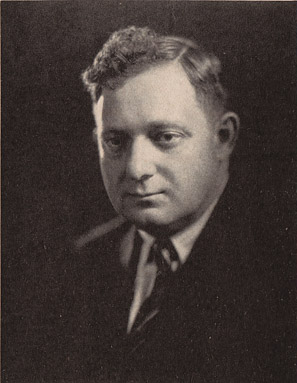
Benjamin Gitlow was a prominent American socialist politician of the early 20th century and a founding member of the Communist Party USA. At the end of the 1930s, Gitlow turned to conservatism and wrote two sensational exposés of American Communism, books which were very influential during the McCarthy period. Gitlow remained a leading anti-communist up to the time of his death.
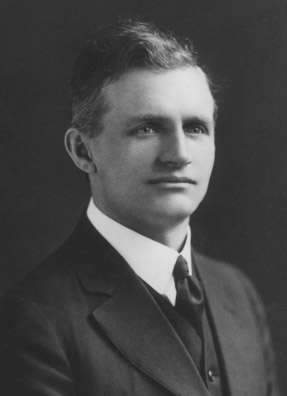
Alfred Wagenknecht was an American Marxist activist and political functionary. He is best remembered for having played a critical role in the establishment of the American Communist Party in 1919 as a leader of the Left Wing Section of the Socialist Party. Wagenknecht served as executive secretary of the Communist Labor Party of America and the United Communist Party of America in 1919 and 1920, respectively.
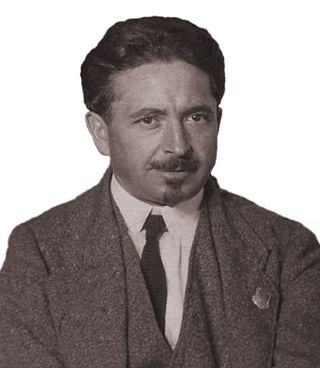
Max Bedacht Sr. was a German-born American revolutionary socialist political activist, journalist, and functionary who helped establish the Communist Party of America. Bedacht is best remembered as the long-time head of the International Workers Order, a Communist Party-sponsored fraternal benefit organization.

The Left Wing Section of the Socialist Party was an organized faction within the Socialist Party of America in 1919 which served as the core of the dual communist parties which emerged in the fall of that year—the Communist Party of America and the Communist Labor Party of America.

Herbert Moore "Harry" Wicks (1889–1956), best known as "Harry M. Wicks," was an American radical journalist and politician who was a founding member of the Communist Party of America. He was a plenipotentiary representative of the Communist International to Australia in 1930-31 and there directed the reorganization of the structure and leadership of the Communist Party of Australia.

Ludwig Erwin Alfred "Dutch" Katterfeld was an American socialist politician, a founding member of the Communist Labor Party of America, a Comintern functionary, and a magazine editor.
The Finnish Socialist Federation was a language federation of the Socialist Party of America which united Finnish language-speaking immigrants in the United States in a national organization designed to conduct propaganda and education for socialism among their community.
The Left Wing Manifesto is the name bestowed upon two distinct programmatic documents of the Left Wing Section of the Socialist Party during the factional war in the Socialist Party of America of 1919.
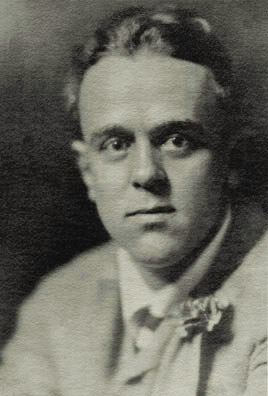
The New York Communist was a short-lived weekly newspaper issued by the Left Wing Section of the Socialist Party of Local Greater New York, encompassing the New York City metro area. The paper was edited by the radical journalist and war correspondent John Reed. Only 10 issues of the paper were produced during 1919 before the publication was absorbed by The Revolutionary Age following the Left Wing National Conference of June 1919.

Joseph Zack Kornfeder (1898–1963), sometimes surnamed "Kornfedder" in the press, was an Austro-Hungarian-born American who was a founding member and top leader of the Communist Party of America in 1919, Communist Party USA leader, and Comintern representative to South America (1930–1931) before quitting the Party in 1934. After his wife was arrested by the secret police during the Great Terror (1937–1938), Zack became a vehement Anti-Communist and testified before the Dies Committee (1939) and Canwell Committee (1948).
Abraham "Abram" Jakira was an American socialist political activist, newspaper editor, and Communist Party functionary. He is best remembered as one of the early Communist Party's factional leaders of the 1920s.

The Communist Party USA has held thirty-two official conventions including nomination conventions and conventions held while the party was known as the Workers Party of America, the Workers (Communist) Party of America and the Communist Political Association. There were also a number of congresses held by the earlier organizational predecessors of the party, including the Communist Labor Party of America, the United Communist Party and two groups known as the Communist Party of America. The Communist Party's 31st National Convention took place in Chicago from June 13 to 15 in 2019.
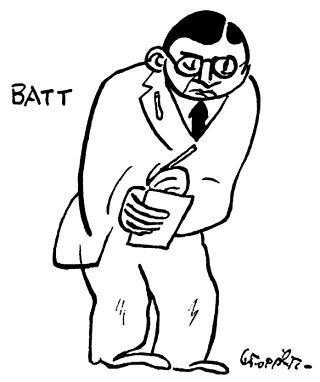
Dennis E. Batt was an American political journalist and trade union activist. Best remembered as the first editor of The Communist, the official organ of the Communist Party of America and leading member of the Proletarian Party of America, in later years Batt's political views became increasingly conservative and he ended his life as a mainstream functionary in the union movement.
John J. "Johnny" Ballam was an American Marxist political activist and trade union organizer. He is best remembered as a founding member and one of the pioneer leaders of the Communist Party of America and as a leader of the Trade Union Unity League in the textile industry during the 1930s.

The Russian Socialist Federation was a semi-autonomous American political organization which was part of the Socialist Party of America from 1915 until the split of the national organization into rival socialist and communist organizations in the summer of 1919. Elements of the Russian Socialist Federation became key components of both the Communist Party of America and the rival Communist Labor Party of America as "Russian Federations" within these organizations. Following the unification of these two groups in 1921, the resulting unified Russian Communist Federation gradually evolved into the so-called Russian Bureau of the Communist Party, USA.

Harry Mordecai Winitsky (1898–1939) was an American left wing political activist who was a founding member of the Communist Party of America. Winitsky is best remembered as one of the chief defendants of the New York "Criminal Anarchism" prosecutions that were part of the First Red Scare of 1919–1920. Winitsky served two years in prison of a 5 to 10-year sentence beginning in March 1920. Released on bail in 1922, Winitsky was ultimately pardoned by New York Governor Al Smith in January 1924. Winitsky left the Communist Party USA in 1929.
Isaac Edward "Ed" Ferguson (1888–1964) was a North American lawyer and political activist. A founding member of the Communist Party of America, forerunner of the Communist Party, USA, Ferguson is best remembered a co-defendant and attorney in a highly publicized 1920 trial together with party leader C. E. Ruthenberg for alleged violation of New York state law against so-called "criminal anarchism." Following conviction and a term served at Sing Sing prison, Ferguson withdrew from radical politics to become a prominent Chicago civil rights attorney.

James Patrick Cannon was an American Trotskyist and a leader of the Socialist Workers Party.
This page is based on this
Wikipedia article Text is available under the
CC BY-SA 4.0 license; additional terms may apply.
Images, videos and audio are available under their respective licenses.















